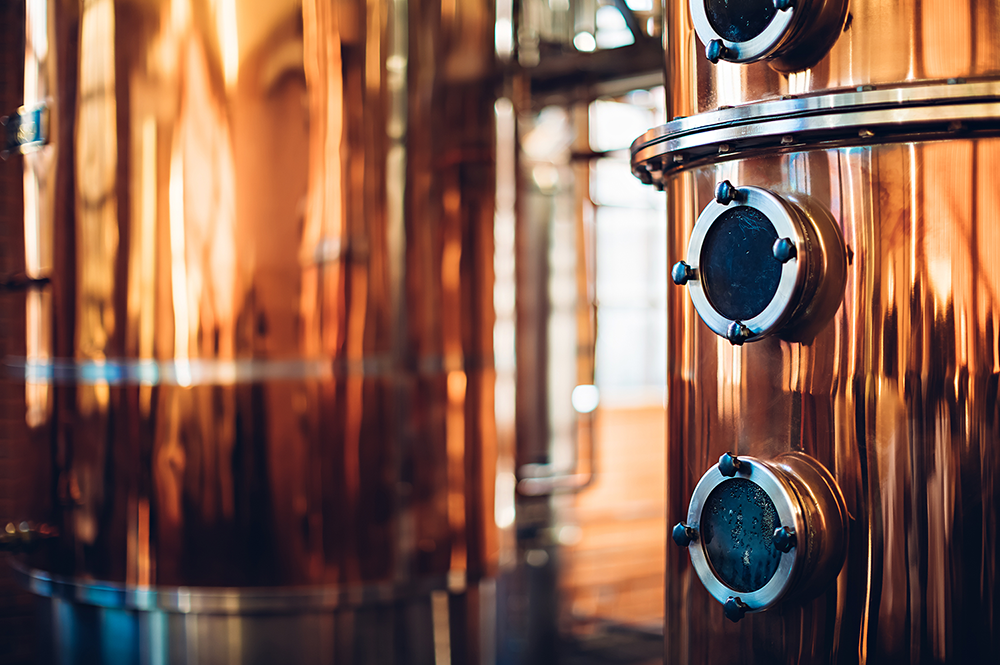Stories
Whisky is a passion to explore. From the history of the spirit to the evolution of the industry, the story of whisky helps fuel that passion. Often, it’s easy to forget that whisky is also a global multibillion dollar industry. The stories of whisky — from news and new releases to in-depth inquires and what goes on behind the label — blend together to help us appreciate the spirit of whisky.

Whisky & Water Use Criticized by Scottish Regulators
January 20, 2015 – Scottish environmental regulators ranked eight whisky plants as “poor” for exceeding their allowed water usage during 2013, according to a report in the Sunday Herald. The Scottish Environment Protection Agency released a redacted version of its annual report last November, citing “national security” reasons for refusing to list the performance of specific facilities. However, the agency released its complete findings on water use to the paper following a request under the UK’s freedom of information laws. The redacted section of the annual environmental report included data on facilities handling radioactive materials as well as the water usage data.
“I don’t think there’s any evidence of deliberate intent to defraud the system by using more water than they should,” Sunday Herald environment editor Rob Edwards told WhiskyCast in a telephone interview. “Certainly, the representatives of the whisky industry I spoke to last week when I was working on this story were very clear that they had made mistakes, errors had occurred, or misunderstandings had occurred which they were anxious to not occur again.” In several cases, leaks in pipelines or valves that went undetected for several months caused distilleries to use more water than allowed by their permits.
Listen to Mark Gillespie’s interview with Rob Edwards:
Diageo owns five of the plants on the list. Teaninich Distillery in Alness received a “poor” rating after a change in managers during the year led to over-abstraction (water use) that may have caused the burn that supply Teaninich’s water to dry up. Cragganmore Distillery in Speyside and Islay’s Port Ellen Maltings made the list for over-abstraction, while Dailuane Distillery in Speyside’s problems were linked to a pipeline leak between the distillery and its bioplant that was not discovered for nearly five months before it was repaired. A leaking valve at Glendullan Distillery in Dufftown caused the boiler’s feed tank to overflow several times over a four-month period in early 2013 before it was repaired.
In a statement provided to WhiskyCast by Diageo, Distilling and Maturation Director Keith Miller defended the company’s overall record on environmental protection.
“Water is the life-blood of our business and we take the responsible stewardship of water extremely seriously. The incidents identified were caused by specific short-term issues which were resolved to SEPA’s satisfaction. Across our business we abstracted significantly less water than the SEPA licences allow. In the cases identified our average daily abstraction rates were well below the licenced maximum. We monitor our water abstraction very closely and where issues do occasionally arise we take immediate and strong action to resolve them.
We are determined to protect water quality for all users and for wildlife. That’s why we fund projects like the Spey Catchment Initiative, in partnership with the Spey Fisheries Board, which works specifically to enhance the water environment across a 3,000 km2 area of north east Scotland where there is the greatest concentration of whisky distilleries.
Diageo is recognised as a global leader in water stewardship and our commitment was set out in the ambitious long-term targets we recently announced for the sustainable management of water.”
Diageo provided Edwards with more specific details on each of the facilities in an email shared with WhiskyCast. Cragganmore’s over-abstraction was described as an administrative error with no actual violation, while Port Ellen’s violation was described as a low-volume instance while the distillery’s daily average during the year was nearly 100 cubic meters below its permitted levels. The leaks at Dailuane and Glendullan resulted in water being returned to the environment without being used, while Teaninich’s issue was resolved with the construction of a new abstraction point to prevent future problems in dry weather. Again, Diageo cites Teaninich’s daily average water usage as well within permitted levels.
Chivas Brothers was cited for problems at its Miltonduff and Longmorn distilleries in Speyside, with both linked to administrative issues. Longmorn pledged to implement a more efficient abstraction process in 2014 to improve water use, while Miltonduff had a malfunctioning meter in early 2013 that has since been repaired. In addition, the agency and Chivas Brothers agreed to review Miltonduff’s license to adjust its water usage limits to acceptable levels for both the distillery and the surrounding environment. In a statement provided to WhiskyCast by Chivas Brothers, company officials said both distilleries have been brought back into compliance.
“Chivas Brothers takes its environmental responsibilities seriously. It worked closely with SEPA at the time to rectify this issue, and bring its water usage into compliance. This remains the case with both distilleries at present.”
Ian Macleod’s Glengoyne Distillery near Glasgow was the only other whisky plant to receive a “poor” rating after what the SEPA report described as an “environmental event in early October 2013 caused by human error.” The event caused the distillery to breach its water usage limits, and took place just before a new balancing tank was put into use that helped bring the distillery back into compliance. Ian Macleod executives have not responded to our requests for more details on the finding.
In addition to the eight whisky plants receiving “poor” ratings, Ben Nevis (Asahi), Jura (Whyte & Mackay), Glencadam (Angus Dundee), and Deanston (Burn Stewart) were criticized in the report for failing to provide data on their water usage to SEPA.
Burn Stewart’s Ian MacMillan explained the Deanston issue in a February 3 telephone interview. “The data was all there, but there was a fault with the data recorder with sending data to the PC which logged it all, and when you look back at our record over the years (on the SEPA web site), it shows Deanston as being excellent, excellent, excellent over the years.” MacMillan noted that because the data had to be manually logged, it was not available by SEPA’s reporting deadline, resulting in the “failed to provide data” listing. While the data has since been provided to the agency and Deanston is certified as being in compliance, MacMillan said SEPA’s policy is to not retract the original listing in public reports.
While the Sunday Herald story did not list specific sites, the Herald’s Edwards provided more complete reporting on his personal web site. “If you look at SEPA’s wider compliance assessment of other industries and other pollutants, there are more serious things going on elsewhere…where people have been found guilty of polluting and causing distress to wildlife and death of fish in rivers, or releasing things into the environment they shouldn’t,” he said. “I wouldn’t say that the failure to properly account for or breaching your license on water is among the top-ranking environmental crimes in Scotland, but it is important or serious…water is a natural resource, and if you use more of it than you say, particularly if it’s been a dry season, streams and rivers can dry up, wildlife and ecosystems can suffer, and of course, other water users who have legitimate uses can be deprived.”
In addition to the eight whisky facilities on the list, the SEPA report cited 22 farms, three golf courses, and the Baxter’s soup production plant at Fochabers as receiving “poor” ratings.
This story will be updated as more information becomes available.
Editor’s note: This story was updated following a February 3 interview with Ian MacMillan of Burn Stewart Distillers in which he explained SEPA’s criticism of Deanston Distillery. The complete spreadsheet listing more than 900 Scottish water permits and their 2013 ratings can be downloaded from Edwards’ web site.




